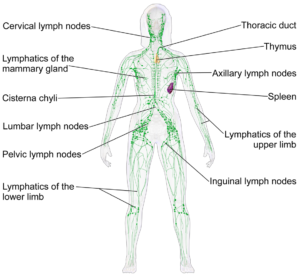The circulatory system is seen to comprise of two (2) separate systems: the cardiovascular system and the lymphatic system. Usually, people only think of the circulatory system as the cardiovascular system, which includes: the heart, arteries, veins and capillaries, however, this is incorrect. The cardiovascular system is responsible for the movement of blood around the body. Blood carries: energy, hormones, nutrients, heat, gases, and much more through the body and has a large influence on movement efficiency and performance. This is because of its connection to the respiratory system and the exchange of gases in the body.
The lymphatic system is responsible for the movement of lymph (collection of interstitial fluid) back to the cardiovascular system via the lymph; nodes, organs, and ducts. The main function of the lymph system is the cleaning of lymph by the immune system.
The main focus for Preliminary PDHPE is the cardiovascular system. The Preliminary PDHPE syllabus for the circulatory system states:
Students learn about:
- Circulatory system
Students learn to:
- analyse the movement of blood through the body and the influence of the circulatory and respiratory systems on movement efficiency and performance.
This learn to provides you with the main focus of this section of the syllabus. You need to focus on the movement of blood, how the circulatory system interacts with the respiratory system and then influences movement. Therefore, you need to ensure you understand the connection between the systems, particularly for the transport of gases in the body and think deeply about how this influences movement.
Practice questions:
Describe the movement of blood through the body. 3 marks
How does the respiratory system influence performance? 5 marks
Analyse how the cardiorespiratory system influences movement efficiency and performance. 8 marks

